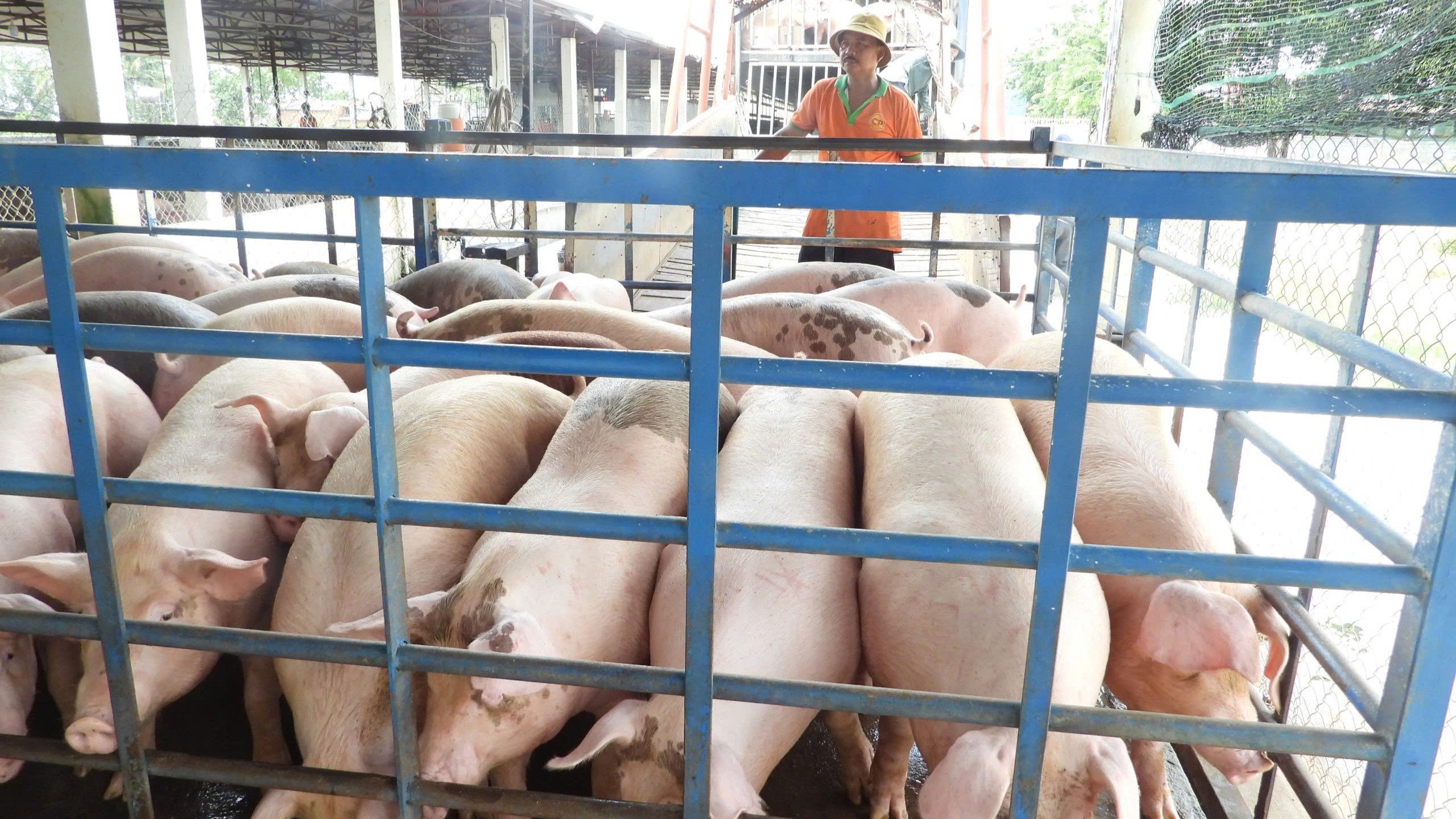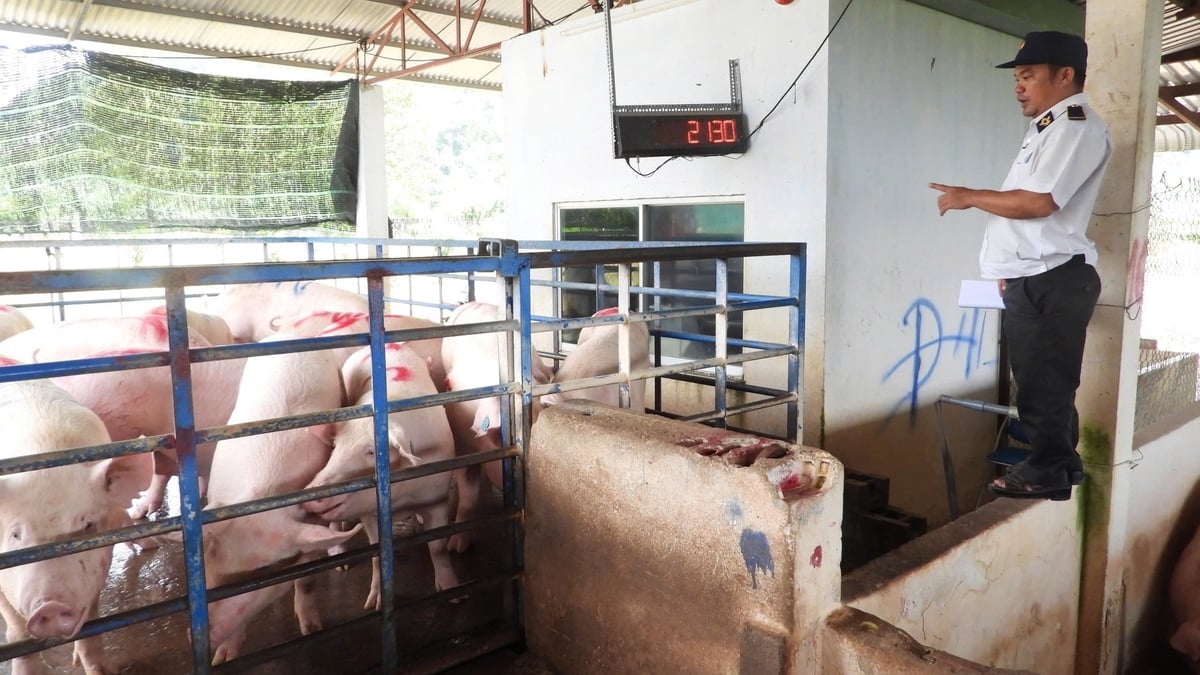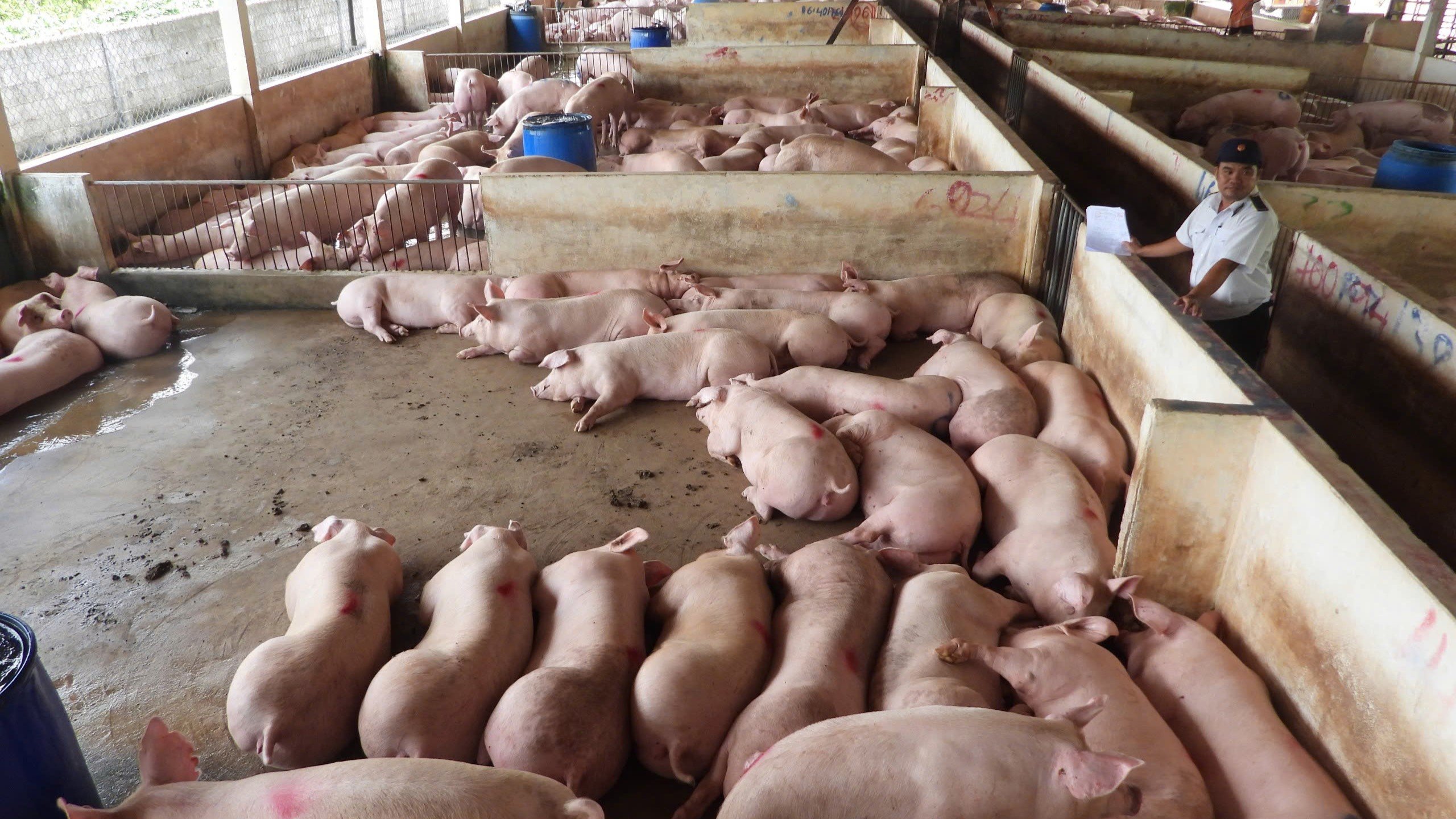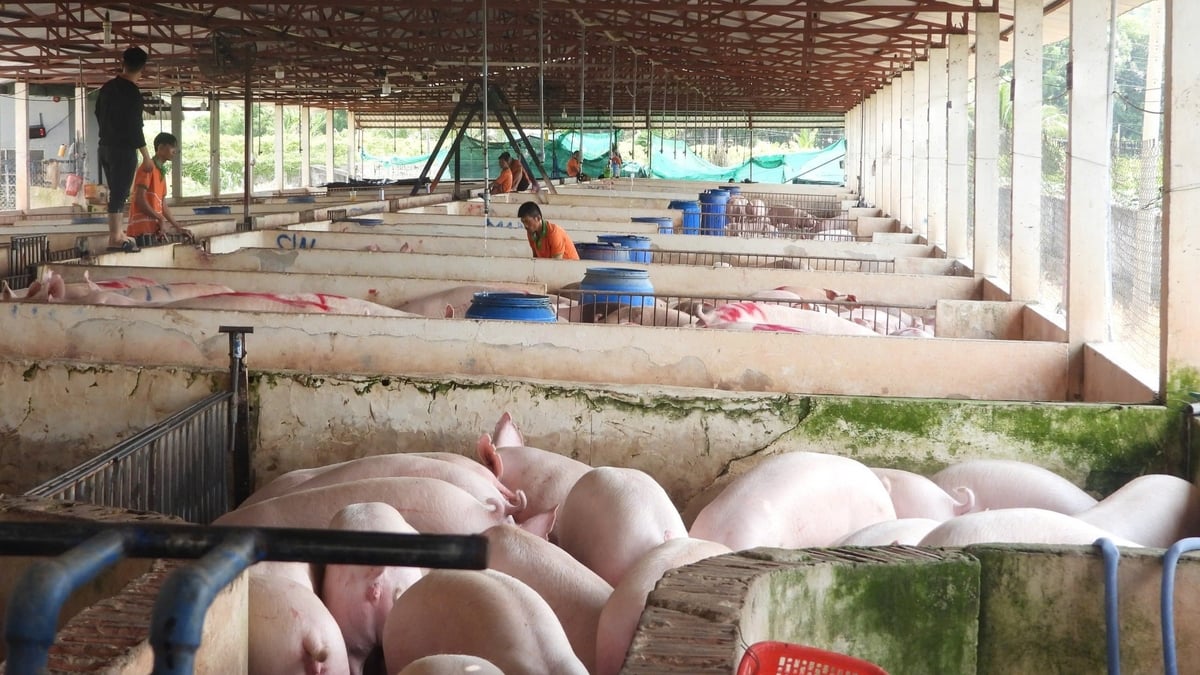December 23, 2025 | 11:29 GMT +7
December 23, 2025 | 11:29 GMT +7
Hotline: 0913.378.918
December 23, 2025 | 11:29 GMT +7
Hotline: 0913.378.918

Tay Ninh transit station is well organized, divided into three epidemic control zones. Photo: Tran Trung.
Along with the in-farm biosecurity measures, a new link has made its appearance in the epidemics control chain: Pig transit station applying digital technology. It is both a biological defense “belt” and a smart monitoring center which helps prevent epidemics occurrence right from the transportation stage.
This model is being successfully deployed by C.P. Vietnam Livestock Joint Stock Company with a system of 24 transit stations across the country. Each station operates as an independent unit with a closed operating process, has a team of veterinary staff on duty 24/7, and shares data via a software system to monitor every vehicle and batches of pigs imported, exported, and processed in real time.
The pig transit station in Tay Ninh is one of the typical models, built methodically on an area of 20,000 m². The station is divided into three zones: the safe zone, buffer zone, and risk zone. All stages have encrypted data, storing information about each pig via an electronic chip equipped with a QR code. The pigs are monitored by a 24-hour camera system.
Nguyen Thi Le Hang, representative of Tay Ninh Transit Station, said, “The station operates as a level 2 quarantine unit, where all pigs brought in from the farm must undergo disinfection baths, have their body temperature measured. Their blood is collected for random check-ups and monitored for at least 24 hours before the livestock is granted permission to leave. All of that data is instantly updated to the internal software system for retrieval at any time.”

Pigs are disinfected and have their health thoroughly monitored and checked before leaving the station. Photo: Tran Phi.
From the perspective of livestock farmers, the transit station is also an indirect layer of protection to prevent strangers and strange vehicles from entering the farm, which used to be the biggest loophole. “Before the station was built, traders came to my farm to choose pigs. With each person and vehicle coming from different regions, it is hard to know who was carrying the disease. Now, it feels much safer bringing pigs to the transit station thanks to careful inspection, and people can make purchases at a better price,” said Nguyen Van Loc, the owner of a pig farm in Binh Duong.
The effectiveness of this model is even more evident during disease outbreaks. During the ASF re-outbreak in late 2023, while many neighboring areas were forced to destroy large numbers of pigs, farms linked to the transit station were almost immune thanks to good disease control at both input and output. Data from C.P. Vietnam shows that the infection rate at farms linked to the station was 73% lower than that of those that did not apply the model.
According to Phan Hien, a technical officer at the C.P. Vietnam station - Tay Ninh branch, the station processes 500 - 1,000 pigs per day, and all processes are digitized, from creating records of entering the barn, monitoring barn conditions, and disinfecting vehicles to issuing electronic quarantine certificates.
"When there are abnormalities, such as unstable temperatures, changes in pig behavior, or detection of strange antibodies, the system will send a warning to the server. From there, the station can promptly quarantine and report back to the farm owner for thorough treatment," he said.

Thanks to strict control, the pigs brought to the slaughterhouse are always healthy, reducing losses. Photo: Tran Phi.
Investing in technology for the transfer station is not only for epidemics times but also a long-term strategy in the roadmap for clean and modern agricultural development. It is expected that by 2026, C.P. Vietnam will deploy ten new transfer stations, applying AI technology to analyze seasonal epidemiological data, thereby predicting disease hotspots and optimizing the transportation route of pigs from the farm to the slaughterhouse.
Southern provinces such as Dong Nai, Binh Duong, Tay Ninh, and Long An have included this model in their livestock industry planning, requiring large farms to link up with transit stations to be granted disease-safe area codes.

The pig transit station is also a place to provide disease prevention technical knowledge to farmers and drivers. Photo: Tran Trung.
In order for the transit station model to be fully effective, it is necessary to have synchronous coordination between the parties: enterprises, livestock farmers, and state management agencies. Integrating the transit station’s data system into the national disease surveillance system not only helps to improve transparency in the supply chain but also supports localities in planning disease-free farming areas, serving future export goals. On the other hand, the State needs to soon issue a clear legal corridor on operating standards, quarantine standards and policies to encourage farms to participate in chain linkages, particularly in key livestock farming areas.
Translated by Samuel Pham

(VAN) The 2025 Joint Response Plan (JRP) identifies three core priorities and calls for $96.2 million to support disaster recovery for 1.4 million people.

(VAN) Risk assessment methodology enables early risk identification, rational resource allocation, and the development of control measures tailored to the food value chain.

(VAN) Once considered a waste product to be burned, rice straw in the Mekong Delta is now being collected and processed through mechanization and biotechnology, paving the way for a sustainable circular agricultural model.

(VAN) Risk assessment in food safety management not only helps protect public health but also promotes sustainable development.

(VAN) Prime Minister chaired the 26th meeting of the National Steering Committee on Illegal, Unreported, and Unregulated (IUU) Fishing.

(VAN) Cuba is currently streamlining procedures to attract investors, with many new policies shaped by the practical experiences of Vietnamese projects operating in the country.

(VAN) Patrol Team No. 15 has been executing patrol, inspection, and control duties in the Southwest waters, a region identified as having a high risk of violations.